The definition of Khatam Kari (inlay work) in the Persian encyclopedia is “the art of decorating the surface of objects in a mosaic-like manner, with small triangles. The various designs of Khatam have always been in the form of regular geometric shapes. These geometric shapes are patterned by placing small triangles together. Triangles are made from various types of wood, metal, and bone. The smaller and more delicate the triangles are, the better the inlay is. In an inlay design, at least three triangles are used to make the smallest geometric unit. And for the largest one, a maximum of four hundred triangles would work.
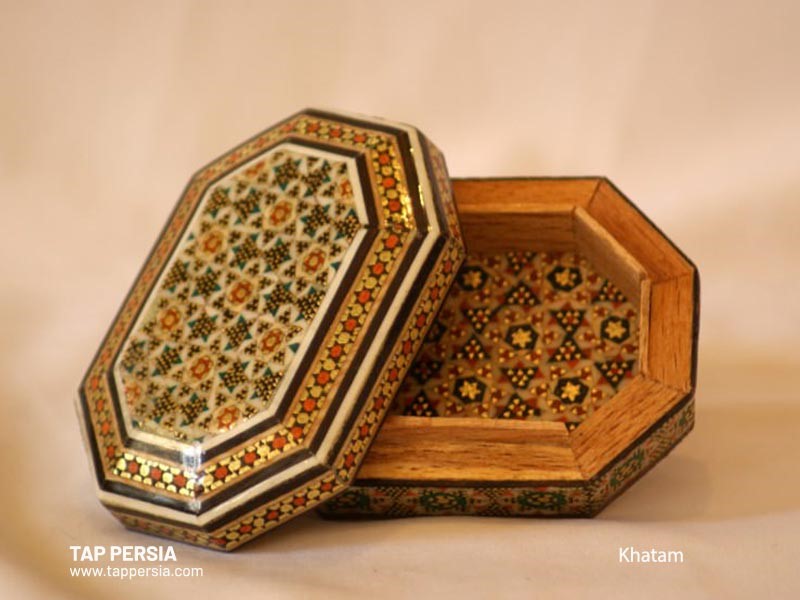
The History of Khatam Kari
This art reached Iran in its present form before the Safavid period and during the conquest of Iran by the Ilkhanate. And on the other hand, it was a result of a direct relationship between Iran and China during this time. Some other researchers also believe that Khatam Kari was founded in Shiraz during the Daylamites period in Iran. And reached its peak of prosperity in the Safavid era. It was so because the government supported the artists and established business relations with far and near countries, as well. So due to these reasons, Khatam art(Shiraz souvenirs) got more popular.
In Iran, before the advent of Islam, there was a different type of Khatam Kari. According to this method they cut four-millimeter cubes from solid wood and installed and nailed them with various designs on a board. This method lasted for several centuries. It was also common after Islam. Currently, there is a Minbar made with pre-Islamic Khatamkari in the Aqiq Jameh Mosque of Shiraz. They built this minbar more than a thousand years ago.
This Art Has Two Stages:
1- Crafting Khatam (Khatam Sazi):
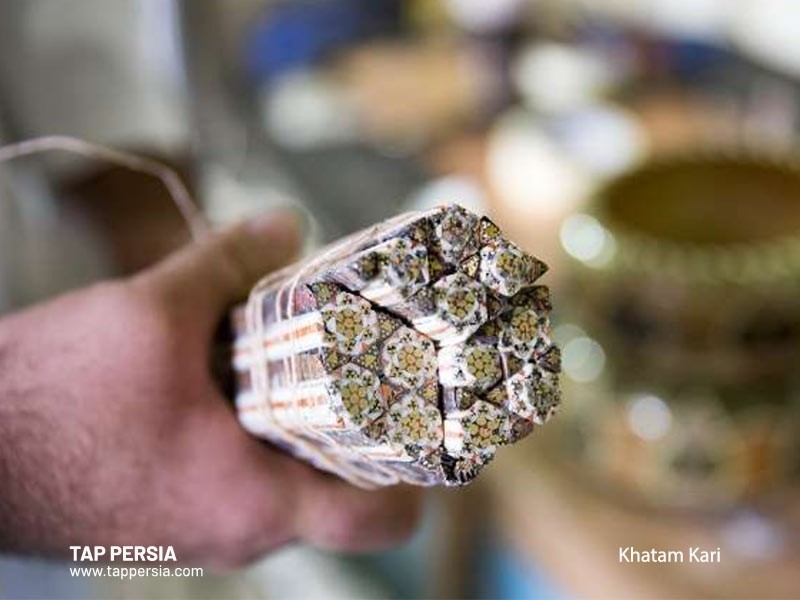
This stage includes operations such as the design of Khatam, preparation of materials, cutting of primary materials, mixing the cut materials and creating flowers, and finally making Qameh (a rectangular cube body with an average length of 40 cm, width of 10 cm, and diameter of 3 cm of wood or Khatam). Then the next level is cutting it and preparing the Khatam Kari layer.
2- Apply Khatam on Sub work (Khatam Kari):
This stage includes preparing the foundation’s design, gluing the layers of Khatam on the sub-work, and polishing the Khatam objects.
Crafting Khatam Method
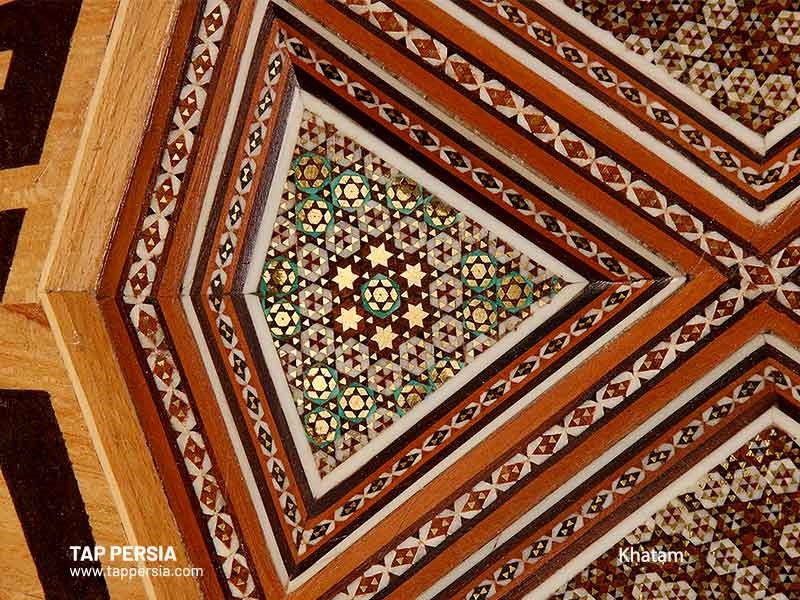
In Khatam Kari, wood, bone, or metal is cut in the form of equilateral triangle prisms rods. They are placed together so that the cross-section of these single triangles has regular geometric shapes. Then they cut a thin layer of what they make and glue it on a thin wooden sheet in a special order. And after drying, the sheets are installed on the objects that they want to decorate with Khatam.
The type of wood is one of the most important things in Khatam Kari. They mainly use jujube, orange, maple, walnut, acer monspessulanum, populus nigra, box, ebony, and Areca wood. All kinds of bones are also used in making Khatam due to their strength and white color, which include camel, horse, and cow bones, as well as natural elephant ivory and artificial ivory. In order to make the Khatam durable, they also use colored metals in Khatam. These metals are such as silver and aluminum for white color and brass for yellow color.
In order to prepare the wood, they should make sure that it has the right color and texture and does not have knots or cracks. Metals must also have a suitable alloy.
Materials to Craft Khatam
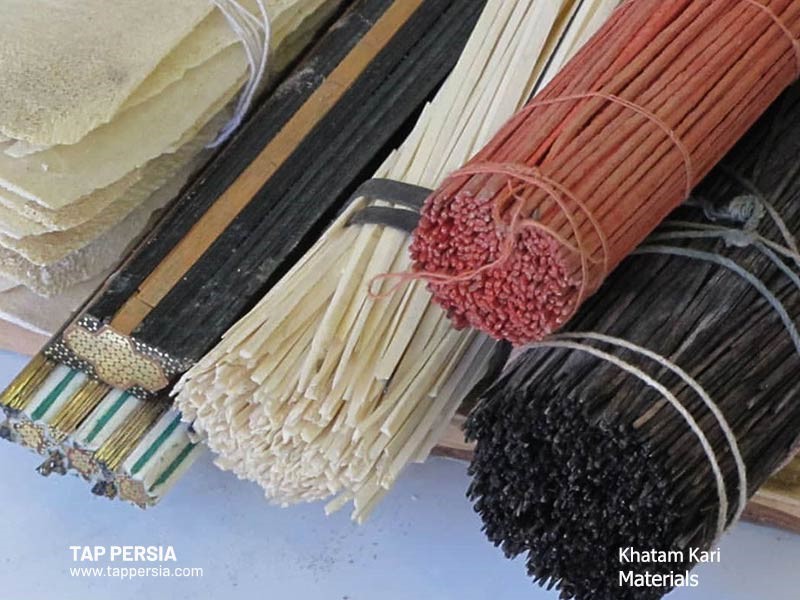
Wood: Areca wood, ebony, jujube, walnut, zelkova, logwood, orange, and boxwood.
Metal: gold or silver wires, copper, brass, aluminum.
Bone: calf and hand bone of camel or horse, elephant ivory, artificial bone
Green color: They prepare this color from the combination of ammonium chloride, copper shavings, and vinegar. They put the cut bones into a container with the solution. Then, they expose it to sunlight for six months. Nowadays, because it is difficult to prepare camel bones, they use orange wood instead. And to dye it, they use the same green color they use for dyeing wool.
How is Khtam Made?
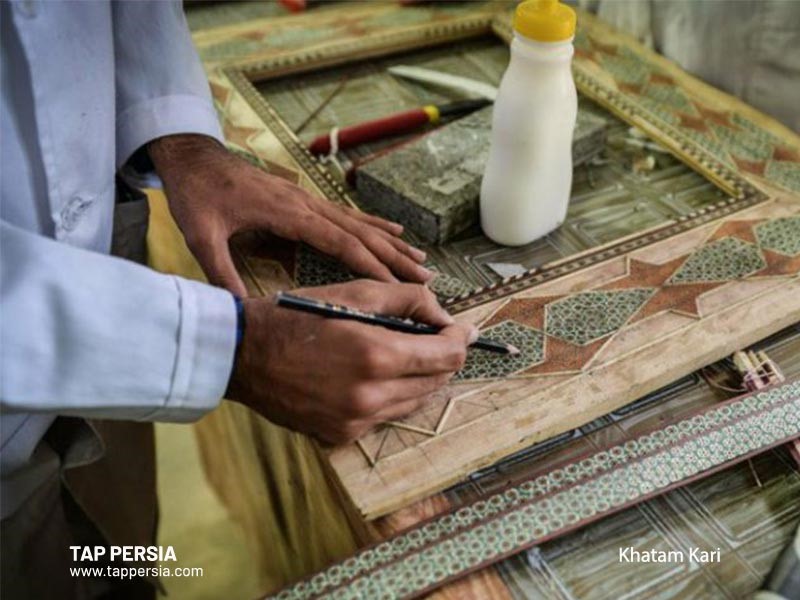
First, they prepare all kinds of thin rods of wood and bones in different colors. And then, cut them with their special tools to a length of 30 cm and a diameter of 1 to 2.5 mm, and they prepare triangle rods from them. After filing all the sides according to the desired shape, they create the desired design by putting these rods together and gluing them. To complete the design, we need triangular wires, as well, which are prepared in different steps. To make Khatam, first, the design of the desired pattern is drawn by the craftsman, and these wooden, bone, and metal triangle rods are placed and glued skillfully by the artist. And then they fasten them with a thread. The result of this stage is a piece that they call “Pareh”.
After a few hours, they open the threads and do the filing of the sides again. Then they put four of the made “Pareh”s together and glue them together to shape the bigger pattern. The result is “Toglu”. In the next stage, which is known as “Gol Pichi”, they make a regular hexagonal shape that they call “Shamseh”. On each side, they glue six wires and secure them with a thread. The result is a star design. They repeat these designs until they are made according to the desired pattern. And then they need to be placed under pressure and to be pressed. After several steps of cutting and gluing very thin layers of wood around it, we have the initial design of a the inlay.
Lubrication of Khtam:
Basically, the surface of a Khatam is oiled for two reasons: one, the shine of the Khatam, and two, its protection against moisture, heat, and cold. In the past, they used polishing oil or pine tree sap for this. Later on, they used Havilox oil, and today they use polyester.
Characteristics of a high-quality Khatam:
1. The work surface is smooth and there is no empty place in it.
2. Uniformity of color and materials used in making Khatam.
3. No change in color and shape.
4. Repair works and plastering works are not clear at the surface level.
5. The similarity of all flowers and shapes on the work surface and angles and sides.
6. The basis and structure of the design should be precise and engineered, so that all the dimensions are the same, similar, and of the same size. Of course, if the chassis of the design is not accurate, the best Khatam will not look good on it. Because it destroys the whole design. That’s why a Khatam artist must also be a master carpenter.
How Do You Clean Khatam?
To prevent any damage to khatam, you should keep it away from moisture, direct sunlight, and heat. And to clean it, you can simply wipe them with a dry tissue. Or in case of necessity splash some water on them and then wipe with cotton clothes.

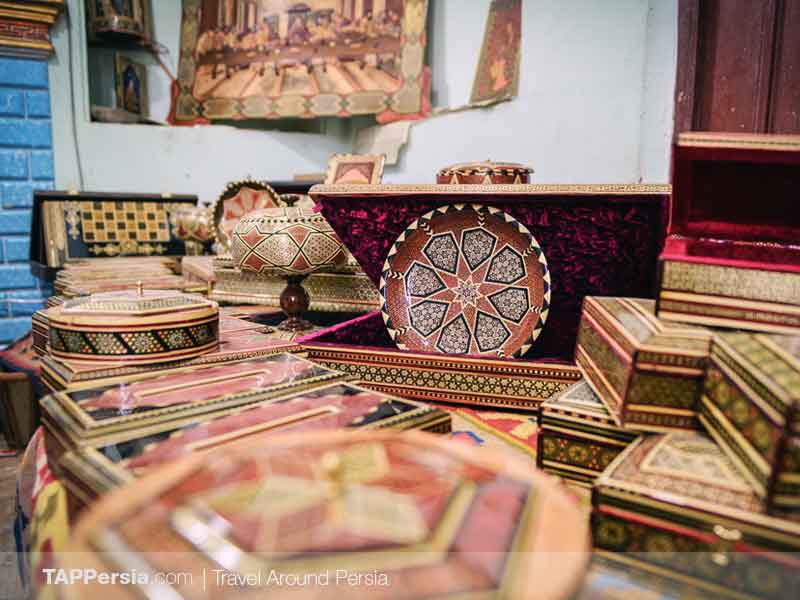


Comment (0)